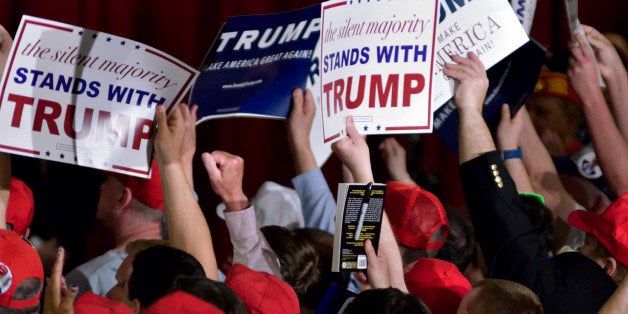
Since the election earlier this month, the explanation for Donald Trump's surprising victory that appears to be getting the most traction is that it was due to the Democratic Party losing touch with white working class voters and not offering solutions to the problems they confront in a changing economy. This trope, however, is not analysis. It is an ahistorical right wing talking point and should be understood as such. The notion that the Democratic Party abandoned the white working class is appealing because it plays on liberal guilt, allows conservatives to nurture a subtext that coastal liberals are somehow not really Americans, and makes it easy to ignore the nature of half a century of Republican efforts to win these votes.
The kernel of truth on which this story is built is that the Democrats did not win a majority of white working class votes in this election. That is, of course, true, but can also be said of every presidential election since 1964. Trump did better among these voters, but the reasons for that go well beyond anything the Democratic Party did this year or in any other recent election.
Despite this, it is true that many Democratic presidential candidates in recent years were not of the white working class and therefore not familiar to them. Michael Dukakis, John Kerry, Barack Obama and the 2016 iteration of Hillary Clinton are not the kind of people who would fit in well at at UAW hall or a blue collar bar. Their policy proposals, however along with those of Democratic leaders in Congress and other recent Democratic presidential candidates, tell a different story.
To a great extent, Republican policies at the state and national level have contributed to the plight of these communities that the Democratic Party abandoned. It was Republican policies and Presidents that weakened labor unions and opposed increasing the minimum wage, thus reducing the economic power of these white voters. Conservative environmental policies led to worse health conditions in many of these communities. Republican budgets meant there was less money for social services that had played an important part in holding these communities together. Over the next decades, these conditions will only get worse as a new GOP administration committed to fiscal irresponsibility, climate change denial and massive tax cuts to the wealthy come into office. Yet, for some reason, we continue to say the problem is that the Democrats did not reach out to these voters enough.
The truth is that the Democrats continued to reach out to white working class voters, and to offer policies aimed at helping them, long after these voters abandoned the Democratic Party. What the Democratic Party did not do, is walk away from their, admittedly sometimes inadequate, commitment to civil rights for people of color, women and LGBT voters. Those commitments, and the willingness of an increasingly emboldened Republican Party to exploit hatred and fear at every turn, are what has cost the Democrats white working class votes.
The Republican Party exploited this to create a rift between the Democrats and the white working class voters who, for most of the middle of the 20th century, had been their most loyal voters. Richard Nixon's Southern Strategy, Ronald Reagan's imaginary Welfare Queen and George H. W. Bush's Wille Horton commercial are just some of the many examples of how the Republican Party used race and racism to appeal to the white working class. It is important to remember these precedents because they allow us to put Donald Trump's campaign in context. Trump's may have been the most racist presidential campaign in modern history, but he was most certainly not the only Republican to do down that road.
The now widespread belief that Trump won because of white working class anger has become an important corollary to the Democrats abandoned the white working class narrative. However, with regards to this election, even more than in previous ones, that analyses gets the causality reversed. White working class anger did not lead people to vote for Trump; Trump led people to white working class anger. An important part of this election was that Donald Trump spent a year and a half telling white Americans that they needed to be angry about the state of the world and the country. He did this through incoherent arguments, misrepresentations of economic data, prejudice and outright lies. Trump obviously benefited from this anger, but in a very real way, he created it as well. Moreover, Trump did not create this campaign out of whole cloth, but rather built on the efforts of the right wing media and political leadership over the last several decades to stoke white working class anger as a way to corral votes for a party with a royalist economic platform. Those lower income white workers who voted for Trump may believe they have been abandoned by the Democrats, but they have been manipulated and exploited to a much worse end by the Republicans.
